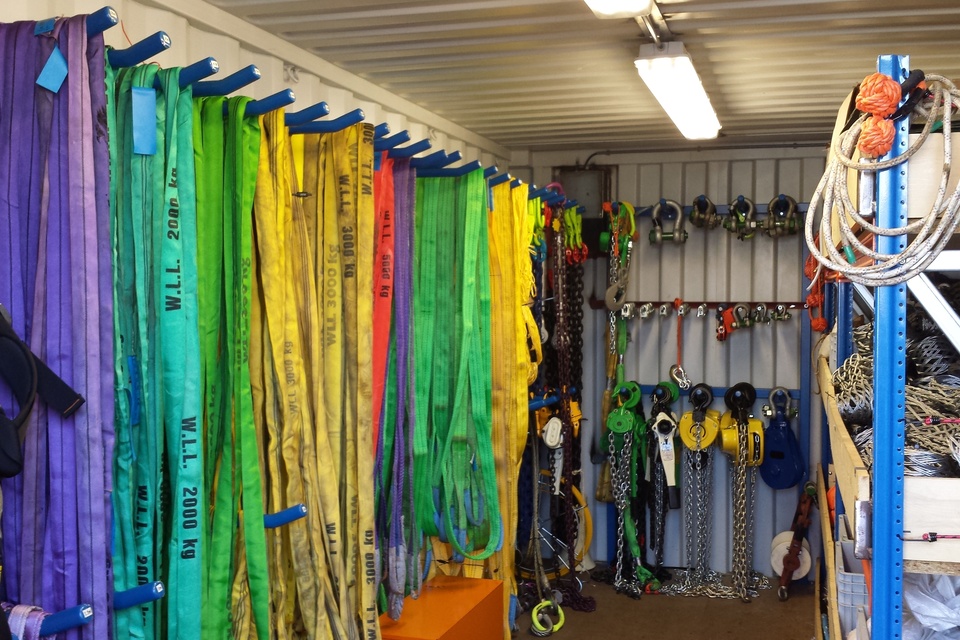Rigging equipment plays a vital role in construction and industrial applications, ensuring heavy materials are safely lifted and moved into position. Maintaining the safety and longevity of this equipment begins with understanding how to handle and store your rigging equipment properly. Neglecting these best practices could lead to equipment failure, accidents, and increased operational costs.
Handling Your Rigging Equipment
Proper handling of rigging equipment starts with thorough inspections before each use. Ensure that all wire ropes or chain slings are free of damage, wear, or fraying. Verifying load capacity is equally critical to avoid overloading and risking equipment failure. Safe lifting begins with attaching the sling to the load securely, ensuring it is balanced and does not overstress any point. Rigging hardware such as shackles and hooks must also be checked for wear to guarantee reliable performance.
Choosing the right equipment for the task is essential to achieve optimal safety. Be it a wire rope sling for specific tensile strength or a chain sling for durability, matching equipment to the job ensures work is conducted efficiently without risking damage to the tools or the load being handled.
Storing Your Rigging Equipment
Clean equipment promotes durability. Dirt, grease, and other materials left on tools can wear down components over time, reducing their lifespan. After each use, thoroughly clean your rigging equipment to prevent unnecessary degradation.
Storing rigging equipment in a dry, well-ventilated area is critical to protect it from environmental damage. Extreme weather, humidity, and exposure to harsh chemicals can corrode equipment, weakening its structural integrity. Clearly organized storage spaces prevent overloading and allow for easier access, saving operators time and effort. Additionally, coiling wire rope or slings properly avoids kinks and tangles, maintaining their usability.
Maintenance To Prevent Equipment Failures
Regular inspections of rigging equipment are nonnegotiable. Checks for proper lubrication and wire maintenance ensure that all ropes and hooks remain in good working condition. Address wear promptly by either repairing or replacing damaged parts to keep operations safe and efficient. Following these maintenance guidelines helps prevent accidents and improves tool durability.
Understanding how to handle and store your rigging equipment properly is essential for maintaining efficient, safe operations. By adopting these best practices, construction professionals not only extend the life of their tools but also protect themselves and their teams from avoidable incidents. Committing to proper handling and storage techniques ensures better project outcomes and safer workplaces.

